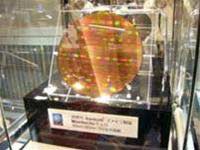“Montecito,” the first dual-core chip of the Itanium family, is set to be unveiled on July 18, 2006. Itanium is Intel’s powerful chip line designed for high-end servers and workstations.
 |
|
Montecito Chip |
In the world of technology, the introduction of server processors reflects a company’s “status” and “capabilities” in technology.
With 1.7 billion transistors, “Montecito” is Intel’s flagship in the competition for dominance in the high-end server and workstation market, where Sun Microsystems’ Sparc processors and IBM’s Power line currently hold the advantage.
Montecito has been in development since 2005 but has been delayed until today, featuring a bus limit of 200 MHz, and it lacks some technologies that Intel has “noted,” such as Foxton—a technology that allows Itanium chips to operate with a bus greater than 200 MHz, provided the temperature threshold is maintained. The maximum operating speed is 1.6 GHz, which is lower than initially planned (2 GHz with Foxton technology). However, “Montecito,” also known as the Itanium 2 Series 9000, is equipped with energy-saving technology. “Montecito” has an average power consumption of around 100W compared to 130W of the previous Itanium.
Unlike the Hyper-Threading technology of single-core chips such as Pentium and Xeon, which only allows the CPU to process multiple instructions simultaneously, Virtualization Technology (VT) enables multi-core CPUs to run multiple operating systems concurrently. This means that “multi-platform” applications will be handled more effectively.
Montecito is expected to be distributed to customers after the second quarter of this year.
TRẦN HUY


















































